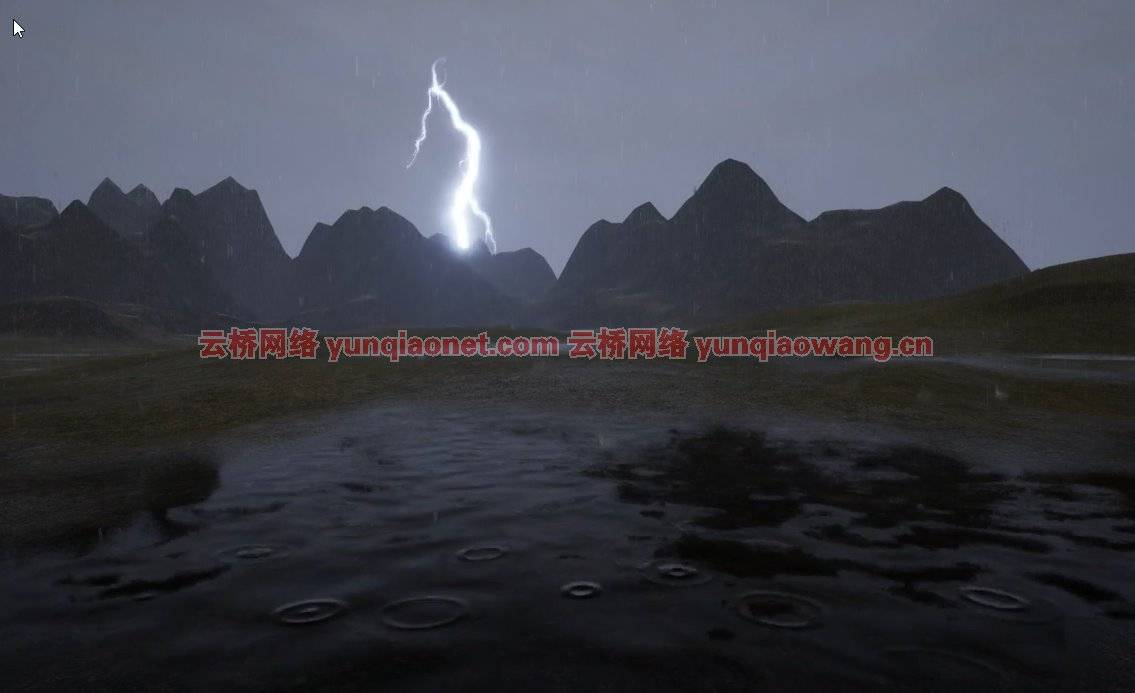
欢迎使用虚幻引擎5动态天空和天气系统的终极解决方案。在本课程中,您将踏上创建强大天空系统的旅程,该系统具有动态的昼夜循环、令人着迷的体积云、带有脚印和复杂雪粒的沉浸式雪天气,甚至是带有逼真雨滴、水坑、和迷人的闪电效果。最重要的是,我们将从头开始。Unreal Engine 5:One Course Solution For Sky & Weather System
课程时长:13.5小时 包含课程文件 1280X720 MP4 语言:英语
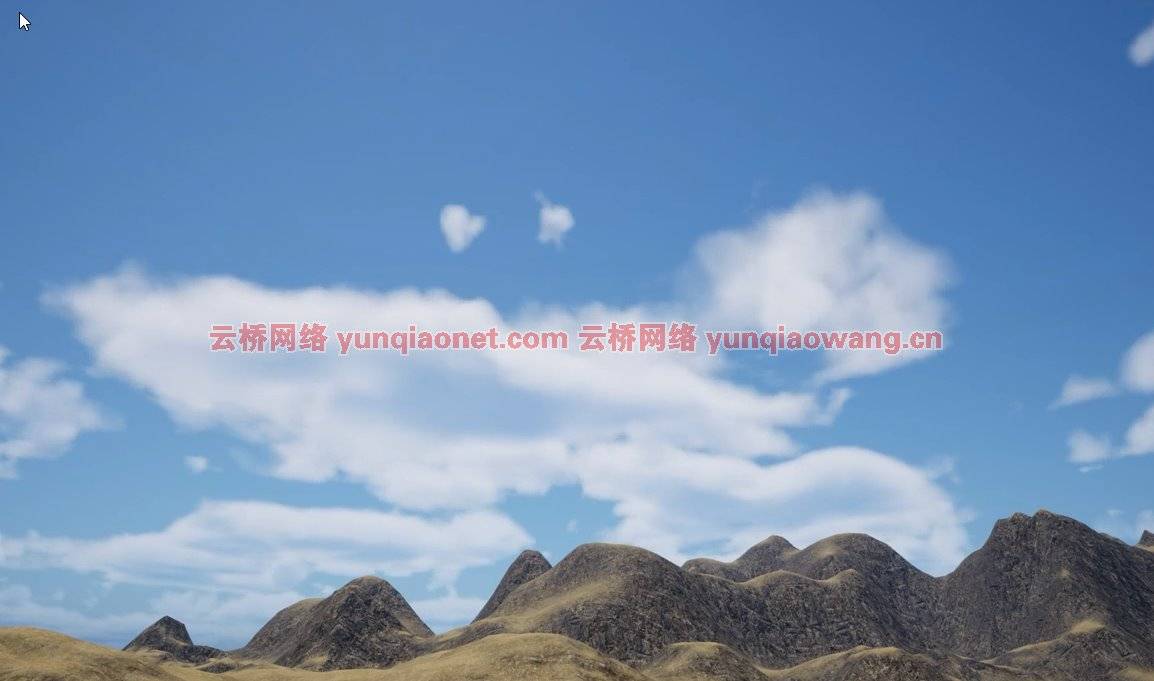
您将学到什么
具有拖放照明解决方案的动态天空系统 具有
相应天气的多个天空预设 具有
月亮和星星的夜空
细胞轰炸和三平面投影材料
使用物理材料的不同足迹 FX
构建不同的 Niagara 天气 VFX
编写自定义 Niagara用于高级粒子行为的模块脚本
学习材质/Niagara/蓝图的最佳编码实践
构建漂亮的体积云材质
深入研究不同的光照属性
为天气系统创建贴花材质
通过蓝图和材质参数集合制作天气 FX 动画
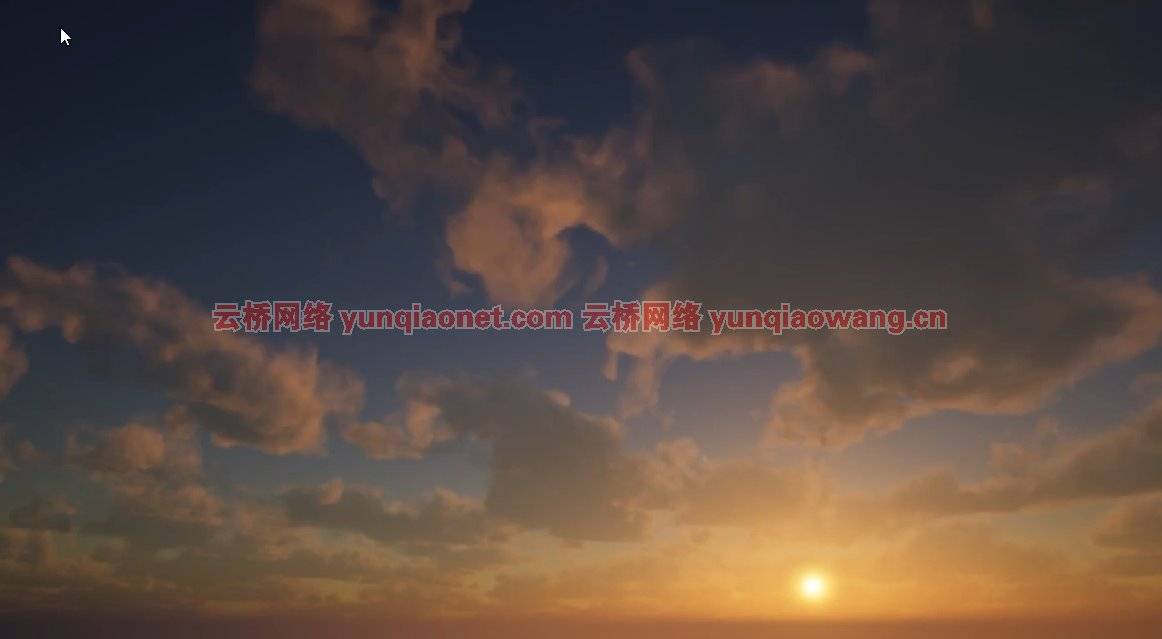
在第一部分中,我们将深入研究如何创建基本的昼夜循环。我们将把星星、月亮和详细的变量纳入其中,使我们能够微调天空系统的外观。我们的旅程从制作蓝图动态天空 Actor 开始,提供简化的照明解决方案。从那里,我们将使用构建脚本为使用蓝图宏的基本时钟系统奠定基础。随着我们的进展,我们将探索天空球体和天空材质的概念,通过蓝图变量引入我们自己的可定制星星和月亮。
继续第二部分,我们将向动态天空系统介绍二维云和体积云。这次冒险首先创建一个蓝图枚举来定义不同的云模式。然后,我们将增强在上一节中构建的天空材质,以无缝地合并 2D 云。此外,我们将深入研究平面投影,揭示其在将体积云投影到天空中的作用。我们将探索体积纹理和体积高级输出以提高真实感,并利用标准化高度掩模和宏观变化来获得复杂的细节和迷人的形状。通过动画为云注入活力后,我们将向蓝图公开更多属性,从而更好地控制最终外观。
在第三部分中,我们将构建一个基本景观,并辅以自动景观材质,从而实现纹理轰炸、三平面投影和坡度混合。我们将通过使用我们可以使用的噪声纹理来雕刻一个基本的景观来启动该过程。随后,我们将深入研究纹理轰炸和三平面投影的概念,彻底改变我们的景观的平铺功能。
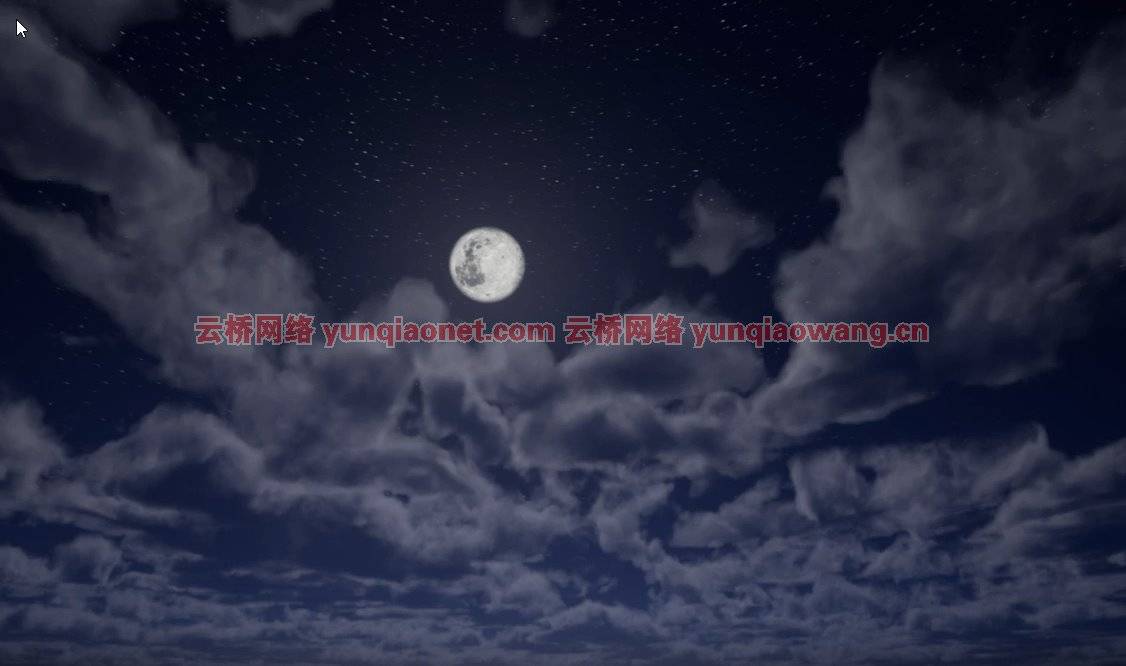
在下一节中,我们将在系统中引入下雪天气,包括足迹、雪颗粒、景观和物体的雪混合以及动态雪混合。我们的旅程从在测试环境中探索雪天照明开始。我们将介绍数据资产、蓝图结构的概念,以及它们如何充当各种照明属性和天气切换机制的存储库。在为景观和物体创建雪混合蒙版之后,我们将深入了解如何使用材质参数集合进行全球天气FX控制。我们还将探索动画通知、蓝图宏库、贴花材质和 Niagara 系统,以在下雪条件下选择性地生成足迹。此外,我们将开发一个定制的Niagara模块,以实现高效的粒子生成,使用它作为模板来生成我们的雪颗粒。最后,我们将使用蓝图中的时间线来实现动态雪混合。
在最后一部分中,我们将处理下雨天气,包括雨滴、水坑、交互式飞溅、闪电和后期处理雨滴 FX。旅程始于为阴雨天气创建新的数据资产。我们将深入研究生成程序水坑以及在材料中使用翻书动画来创建涟漪的复杂性。将涵盖用于波浪生成的自定义材质函数,以及水坑与景观的融合。然后,我们将通过建立主液体材料和 Rain Niagara 系统来掌握制作高性能 Rain FX 的艺术。我们的探索扩展到自定义 Niagara 输入脚本和点积利用,以根据距离和视角缩放雨滴亮度。通过碰撞事件生成飞溅和雨 FX 的用户参数将被无缝集成。我们还将探索物理材质的概念以及它们如何定义表面类型,使我们能够在角色踩在水坑上时产生水花。最后,我们将创建一种闪电材质并启动配套的Niagara系统的工作。最后,我们将把表面雨滴转化为我们系统的后处理材质。
本课程是您在网上可以找到的有关创建天空和天气系统的最全面的指南。在整个课程中,应用任务和部分挑战将确保您的理解和复制每个步骤的能力。
本课程适合谁:
想要了解如何构建天空系统的中级UE5用户
想要学习更高级的材质和Niagara技术的学习者
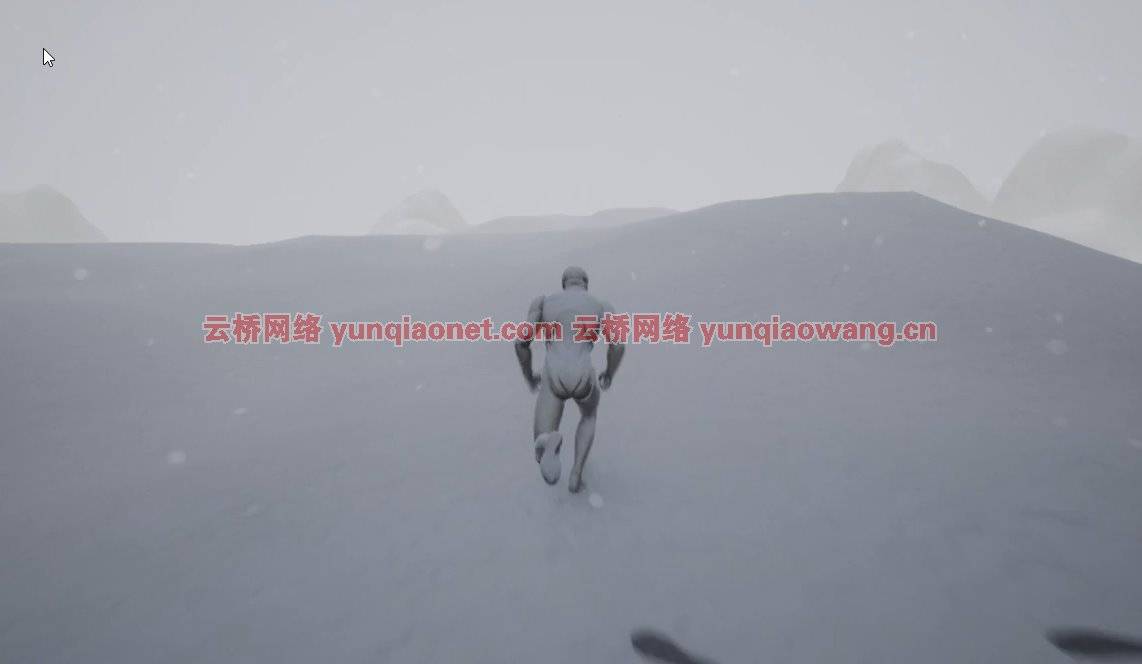
Unreal Engine 5:One Course Solution For Sky & Weather System
Info:
What you’ll learn
Dynamic sky system with drag and drop lighting solution
Multiple sky presets with corresponding weather
Nighttime sky with moon and stars
Cell bombing and Tri-planar projection material
Different Footstep FX with physical material
Build different Niagara Weather VFX
Write custom Niagara module script for advanced particle behavior
Learn the best coding practices for Material/Niagara/Blueprint
Build beautiful Volumetric Cloud material
Deep dive of different properties for lighting
Create decal materials for weather system
Animate weather FX through blueprint and material parameter collection
Welcome to your ultimate solution for Unreal Engine 5’s Dynamic Sky and Weather System. In this course, you’ll embark on a journey to create a robust sky system featuring a dynamic day-night cycle, mesmerizing volumetric clouds, immersive snowy weather complete with footprints and intricate snow particles, and even rainy weather with lifelike raindrops, puddles, and captivating lightning effects. Best of all, we’ll be starting from the ground up.
In the first section, we’ll delve into creating the fundamental day-night cycle. We’ll bring stars, the moon, and detailed variables into play, enabling us to fine-tune the appearance of our sky system. Our journey begins with crafting a Blueprint Dynamic Sky Actor, offering a streamlined lighting solution. From there, we’ll employ the construction script to lay the foundations of a basic time-of-day system using Blueprint macros. As we progress, we’ll explore the concept of a sky sphere and a sky material, introducing our own customizable stars and moon through blueprint variables.
Moving on to the second section, we’ll introduce 2D clouds and volumetric clouds to our dynamic sky system. This adventure starts with creating a Blueprint enum to define distinct cloud modes. We’ll then enhance our sky material, built in the previous section, to incorporate 2D clouds seamlessly. Additionally, we’ll delve into planar projection, uncovering its role in projecting volumetric clouds onto the sky. We’ll explore volume texture and volumetric advanced output for heightened realism and harness normalized altitude masks and macro variations for intricate detail and captivating shapes. After breathing life into our clouds with animations, we’ll expose more properties to our blueprint, offering greater control over the final appearance.
In the third section, we’ll construct a basic landscape complemented by an automatic landscape material, enabling texture bombing, tri-planar projection, and slope blending. We’ll initiate the process by sculpting a rudimentary landscape using the noise texture at our disposal. Subsequently, we’ll delve into the concepts of texture bombing and tri-planar projection, revolutionizing our landscape’s tiling capabilities.
In the next section, we’ll introduce snowy weather into our system, complete with footprints, snow particles, snow blending for landscapes and objects, and dynamic snow blending. Our journey commences with an exploration of snowy weather lighting within a testing environment. We’ll introduce the notion of data assets, blueprint structs, and how they serve as repositories for various lighting properties and weather switching mechanisms. The creation of a snow blend mask for both landscapes and objects will be followed by insights into using material parameter collections for global weather FX control. We’ll also explore anim notifies, blueprint macro libraries, decal materials, and Niagara systems to selectively spawn footprints during snowy conditions. Additionally, we’ll develop a custom Niagara module for efficient particle generation, using it as a template to produce our snow particles. Lastly, we’ll implement dynamic snow blending, employing a timeline within our blueprint.
In the final section, we’ll tackle rainy weather, complete with raindrops, puddles, interactive splashes, lightning, and post-process raindrop FX. The journey begins with the creation of a new data asset for rainy weather. We’ll delve into the intricacies of generating procedural puddles and employing flip book animations within our materials to create ripples. A custom material function for wave generation, as well as the blending of puddles with our landscape, will be covered. We’ll then master the art of crafting performant rain FX by establishing a master liquid material and a rain Niagara system. Our exploration extends to custom Niagara input scripting and dot product utilization to scale raindrop brightness based on both distance and viewing angle. Generating splashes through collision events and user parameters for rain FX will be seamlessly integrated. We’ll also explore the concept of physical materials and how they define surface types, allowing us to spawn splashes when characters tread on puddles. Lastly, we’ll create a material for lightning and initiate work on the accompanying Niagara system. Finally, we’ll transform surface raindrops into a post-process material for our system.
This course is the most comprehensive guide you’ll find online for creating a sky and weather system. Throughout the course, applied tasks and section challenges will ensure your comprehension and ability to replicate each step.
Who this course is for:
Intermediate Unreal users who want to know how to build a sky system
Learners who want to learn more advanced Material and Niagara techniques
1、登录后,打赏30元成为VIP会员,全站资源免费获取!
2、资源默认为百度网盘链接,请用浏览器打开输入提取码不要有多余空格,如无法获取 请联系微信 yunqiaonet 补发。
3、分卷压缩包资源 需全部下载后解压第一个压缩包即可,下载过程不要强制中断 建议用winrar解压或360解压缩软件解压!
4、云桥网络平台所发布资源仅供用户自学自用,用户需以学习为目的,按需下载,严禁批量采集搬运共享资源等行为,望知悉!!!
5、云桥网络-CG数字艺术学习与资源分享平台,感谢您的关注与支持!



评论(0)